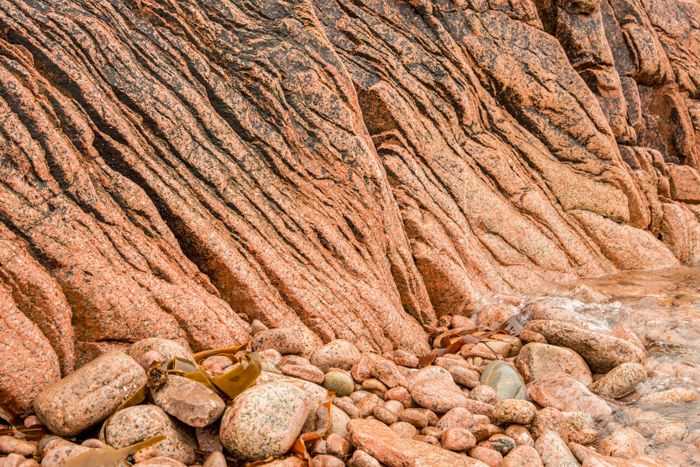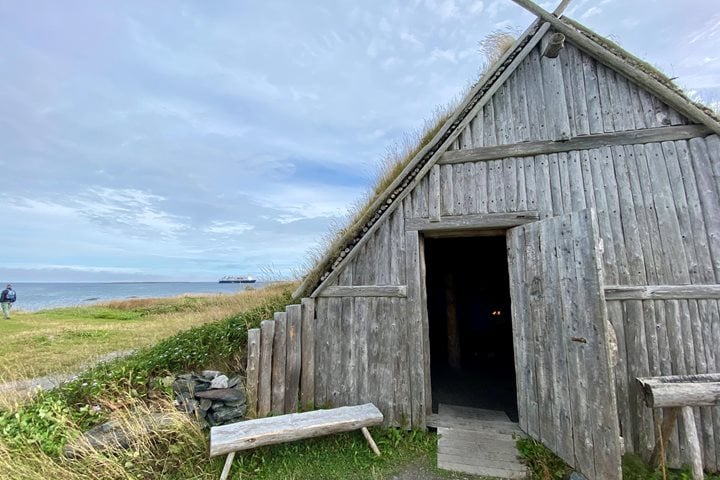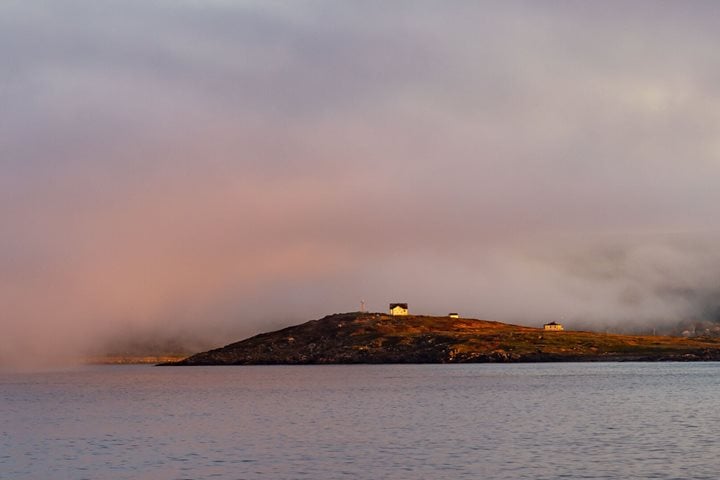After a beautiful sunny and breezy day at Isles des Madelaine, celebrated at recap with nearly limitless local oysters on the half shell, National Geographic Explorer turned north, aiming for Connoiere Bay on the south coast of western Newfoundland. This departure from the ship’s original itinerary—made necessary by a shift to the north for right whale activity—prevented us from accessing our original destination of Havre St. Pierre, Labrador, in a timely manner.
Connoiere Bay is a new destination for our ship and was chosen by expedition leader Peter after examining satellite imagery and locating a place that indicated a safe, if uncharted, harbor in an area with little human habitation or activity. Thus, National Geographic Explorer truly lived up to her name.
The ship dropped anchor during breakfast, in thick fog, calm seas, and temperatures in the mid-fifties. After a quick reconnaissance on shore by our expedition leader, morning activities were planned and announced. First off, the ship were the hikers who were ferried by Zodiac to steep, gravel beaches from which they followed probable (judging from the scat) caribou trails through the boreal forest, on a spongy substrate consisting of a rich variety of peat, mosses, lichen, and heather. A variety of berry-bearing plants showed off their colorful fruit in shades of bright red, yellow, and blue. Abundant carnivorous pitcher plants were observed in addition to dogwood, juniper, and beech trees—all notably short, as is characteristic of trees at this northerly latitude and growing in these impoverished soils.
Once the hikers landed, the call went out from assistant expedition leader Johanna for the Zodiac cruisers to report to the mudroom for boarding. Unfortunately, the fog never lifted. As the Zodiacs departed, they soon lost sight of both the ship and the shore but, with the help of the drivers’ portable GPS devices, the shoreline soon emerged from the curtain of fog. Those on the Zodiacs then enjoyed a cruise along a beautiful shoreline of salmon-colored, coarse-grained granitic rocks, fractured into interesting patterns and punctuated with intervening fine quartz sand beaches. Our onboard geology specialists explained the igneous origins of granite deep within Earth’s crust, noting that it is only through extensive erosion that these rocks are now exposed at the surface for our observation. We also heard an account of the physicochemical origin of granitic magma’s extremely high viscosity, accounting for this magma type’s tendency to stall during ascent at mid-crustal depths where it then takes tens of thousands of years to cool and solidify completely.
Being that our next stop, Gros Morne National Park, is about 22 hours away, the ship picked up steam after lunch, rounded the southwest corner of Newfoundland, and set course to the north. Although the fog persisted, the seas were smooth for this transit and our afternoon hours were filled with presentations.
We first heard an extremely entertaining but thought-provoking, presentation by Global Perspectives Guest Speaker Paul Greenberg on “Four Fish: The Future of the Last Wild Food.” The talk generated a lively Q-&-A session that blended imperceptibly into afternoon tea in the ship’s bistro. Late in the afternoon, Adrian, one of the ship's naturalists and an expert in ecological niches in a variety of geographic settings, shared “The Fortunate Island: Natural History of Newfoundland.” Before we knew it, it was time for recap and another sumptuous dinner was served.









